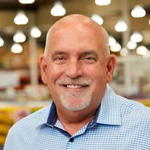
Costco Wholesale Corp
NASDAQ:COST


| US |

|
Johnson & Johnson
NYSE:JNJ
|
Pharmaceuticals
|
| US |

|
Berkshire Hathaway Inc
NYSE:BRK.A
|
Financial Services
|
| US |

|
Bank of America Corp
NYSE:BAC
|
Banking
|
| US |

|
Mastercard Inc
NYSE:MA
|
Technology
|
| US |

|
UnitedHealth Group Inc
NYSE:UNH
|
Health Care
|
| US |

|
Exxon Mobil Corp
NYSE:XOM
|
Energy
|
| US |

|
Pfizer Inc
NYSE:PFE
|
Pharmaceuticals
|
| US |

|
Palantir Technologies Inc
NYSE:PLTR
|
Technology
|
| US |

|
Nike Inc
NYSE:NKE
|
Textiles, Apparel & Luxury Goods
|
| US |

|
Visa Inc
NYSE:V
|
Technology
|
| CN |

|
Alibaba Group Holding Ltd
NYSE:BABA
|
Retail
|
| US |

|
3M Co
NYSE:MMM
|
Industrial Conglomerates
|
| US |

|
JPMorgan Chase & Co
NYSE:JPM
|
Banking
|
| US |

|
Coca-Cola Co
NYSE:KO
|
Beverages
|
| US |

|
Walmart Inc
NYSE:WMT
|
Retail
|
| US |

|
Verizon Communications Inc
NYSE:VZ
|
Telecommunication
|
Utilize notes to systematically review your investment decisions. By reflecting on past outcomes, you can discern effective strategies and identify those that underperformed. This continuous feedback loop enables you to adapt and refine your approach, optimizing for future success.
Each note serves as a learning point, offering insights into your decision-making processes. Over time, you'll accumulate a personalized database of knowledge, enhancing your ability to make informed decisions quickly and effectively.
With a comprehensive record of your investment history at your fingertips, you can compare current opportunities against past experiences. This not only bolsters your confidence but also ensures that each decision is grounded in a well-documented rationale.
Do you really want to delete this note?
This action cannot be undone.

| 52 Week Range |
640.9467
994.69
|
| Price Target |
|
We'll email you a reminder when the closing price reaches USD.
Choose the stock you wish to monitor with a price alert.

|
Johnson & Johnson
NYSE:JNJ
|
US |

|
Berkshire Hathaway Inc
NYSE:BRK.A
|
US |

|
Bank of America Corp
NYSE:BAC
|
US |

|
Mastercard Inc
NYSE:MA
|
US |

|
UnitedHealth Group Inc
NYSE:UNH
|
US |

|
Exxon Mobil Corp
NYSE:XOM
|
US |

|
Pfizer Inc
NYSE:PFE
|
US |

|
Palantir Technologies Inc
NYSE:PLTR
|
US |

|
Nike Inc
NYSE:NKE
|
US |

|
Visa Inc
NYSE:V
|
US |

|
Alibaba Group Holding Ltd
NYSE:BABA
|
CN |

|
3M Co
NYSE:MMM
|
US |

|
JPMorgan Chase & Co
NYSE:JPM
|
US |

|
Coca-Cola Co
NYSE:KO
|
US |

|
Walmart Inc
NYSE:WMT
|
US |

|
Verizon Communications Inc
NYSE:VZ
|
US |
This alert will be permanently deleted.
 Costco Wholesale Corp
Costco Wholesale Corp
Costco Wholesale Corp
Costco Wholesale Corp., a titan of the retail industry, emerged from humble beginnings to redefine how consumers experience value shopping. Founded in 1976 by James Sinegal and Jeffrey Brotman, Costco's journey began with a simple yet powerful ethos: to provide quality goods and services at the lowest possible prices. Unlike traditional retailers, Costco operates on a membership-only model, charging customers an annual fee for the privilege of accessing its wide range of products. This membership system generates a steady stream of revenue and fosters a sense of exclusivity among its shoppers, who are greeted with everything from electronics and groceries to luxury goods and vacation packages. The company's vast warehouses, designed for efficiency and cost savings, allow customers to purchase goods in bulk, further enhancing the value proposition.
What truly sets Costco apart is its business model, which emphasizes high sales volume and rapid inventory turnover, allowing it to negotiate competitive prices with suppliers. A cornerstone of its success is the razor-thin markup strategy; Costco is known for capping markups on all goods, ensuring that customers find bargains they may not encounter elsewhere. The company's operations extend into ancillary businesses, including gas stations, food courts, and optical centers, each contributing marginally to profits but significantly to customer loyalty and foot traffic. By maintaining a streamlined selection of items—typically favoring high-quality, private-label brands—Costco achieves economies of scale that reinforce its cost leadership. Its dedication to employee satisfaction, with industry-leading wages and benefits, reflects a corporate philosophy that happy employees lead to happy customers, further driving its robust membership renewals and financial stability.

Costco Wholesale Corp., a titan of the retail industry, emerged from humble beginnings to redefine how consumers experience value shopping. Founded in 1976 by James Sinegal and Jeffrey Brotman, Costco's journey began with a simple yet powerful ethos: to provide quality goods and services at the lowest possible prices. Unlike traditional retailers, Costco operates on a membership-only model, charging customers an annual fee for the privilege of accessing its wide range of products. This membership system generates a steady stream of revenue and fosters a sense of exclusivity among its shoppers, who are greeted with everything from electronics and groceries to luxury goods and vacation packages. The company's vast warehouses, designed for efficiency and cost savings, allow customers to purchase goods in bulk, further enhancing the value proposition.
What truly sets Costco apart is its business model, which emphasizes high sales volume and rapid inventory turnover, allowing it to negotiate competitive prices with suppliers. A cornerstone of its success is the razor-thin markup strategy; Costco is known for capping markups on all goods, ensuring that customers find bargains they may not encounter elsewhere. The company's operations extend into ancillary businesses, including gas stations, food courts, and optical centers, each contributing marginally to profits but significantly to customer loyalty and foot traffic. By maintaining a streamlined selection of items—typically favoring high-quality, private-label brands—Costco achieves economies of scale that reinforce its cost leadership. Its dedication to employee satisfaction, with industry-leading wages and benefits, reflects a corporate philosophy that happy employees lead to happy customers, further driving its robust membership renewals and financial stability.
Earnings Calls
Management

Ron M. Vachris is an established executive at Costco Wholesale Corporation, a leading global retailer known for its membership-only warehouse clubs. Ron Vachris serves as the Executive Vice President and Chief Operating Officer of the company. Ron Vachris has been with Costco for many years, during which he has gained extensive experience and knowledge in various aspects of the company's operations. Throughout his career at Costco, he has held multiple key positions that have equipped him with a thorough understanding of warehouse operations, merchandising, and overall business strategy. This has made him an integral part of the company's executive team. As Chief Operating Officer, Vachris is responsible for overseeing the day-to-day operations of Costco's warehouse clubs, ensuring that the company maintains its high standards of customer service and operational efficiency. His leadership plays a crucial role in the continued growth and success of the company, contributing to Costco's reputation for delivering value to its members across its global locations.

Ron Vachris has been with Costco for many years, during which he has gained extensive experience and knowledge in various aspects of the company's operations. Throughout his career at Costco, he has held multiple key positions that have equipped him with a thorough understanding of warehouse operations, merchandising, and overall business strategy. This has made him an integral part of the company's executive team.
As Chief Operating Officer, Vachris is responsible for overseeing the day-to-day operations of Costco's warehouse clubs, ensuring that the company maintains its high standards of customer service and operational efficiency. His leadership plays a crucial role in the continued growth and success of the company, contributing to Costco's reputation for delivering value to its members across its global locations.

Richard A. Galanti is the Executive Vice President and Chief Financial Officer (CFO) of Costco Wholesale Corporation, one of the largest retail companies in the world known for its membership-only warehouse clubs. Galanti joined Costco in 1984 and has been instrumental in the company's financial management and strategic expansion over the years. His tenure with Costco spans several decades, during which he has seen the company grow significantly, both domestically and internationally. As CFO, Galanti is responsible for overseeing Costco's financial operations, including financial planning, risk management, and investor relations. His expertise in financial management has helped Costco maintain its competitive edge in the retail industry, known for its low prices and efficient operations. Under his leadership, Costco has successfully navigated various economic challenges, maintaining steady growth and profitability. Galanti is known for his strategic approach to cost management and his commitment to the company's core principles of offering high-quality products at low prices. His role as a spokesperson during earnings calls and investor meetings reflects his importance in shaping Costco's financial strategies and communicating its financial health to stakeholders. His contributions have been pivotal in reinforcing Costco's position as a leading retail giant.

As CFO, Galanti is responsible for overseeing Costco's financial operations, including financial planning, risk management, and investor relations. His expertise in financial management has helped Costco maintain its competitive edge in the retail industry, known for its low prices and efficient operations. Under his leadership, Costco has successfully navigated various economic challenges, maintaining steady growth and profitability.
Galanti is known for his strategic approach to cost management and his commitment to the company's core principles of offering high-quality products at low prices. His role as a spokesperson during earnings calls and investor meetings reflects his importance in shaping Costco's financial strategies and communicating its financial health to stakeholders. His contributions have been pivotal in reinforcing Costco's position as a leading retail giant.





























 You don't have any saved screeners yet
You don't have any saved screeners yet
